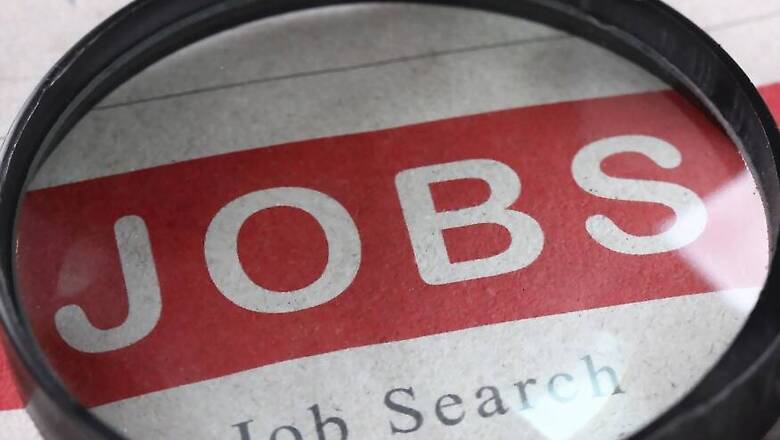
views
Washington: The number of Americans filing applications for unemployment benefits surged to near a 1-1/2-year high last week, which could raise concerns that the labour market is slowing.
The jump in claims reported by the labour department on Thursday comes amid a recent deterioration in business and consumer confidence, which was partly blamed on a five-week shutdown of the federal government that has since ended.
The Federal Reserve on Wednesday kept interest rates steady but said it would be patient in lifting borrowing costs further this year in a nod to growing uncertainty over the economy's outlook. The US central bank removed language from its December policy statement that risks to the outlook were "roughly balanced."
Initial claims for state unemployment benefits jumped 53,000 to a seasonally adjusted 253,000 for the week ended Jan. 26, the highest level since September 2017, the labour department said. The rise was also the largest since September 2017.
Claims dropped to 200,000 in the prior week, which was the lowest level since October in 1969. Economists polled by Reuters had forecast claims rising to only 215,000 in the latest week.
The claims data covered the Martin Luther King holiday. While claims tend to be volatile around holidays, last week's big jump could be flagging a moderation in job growth.
The surge could also reflect filings by non-federal government workers who were temporarily unemployed during the longest government shutdown in the country's history. The labour department said none of the data for individual states were estimated last week.
The four-week moving average of initial claims, considered a better measure of labour market trends as it irons out week-to-week volatility, rose 5,000 to 220,250 last week.
The claims data has no bearing on January's employment report, which is scheduled for release on Friday, as it falls outside the survey period. According to a Reuters survey of economists, nonfarm payrolls likely increased by 165,000 jobs in January after jumping by 312,000 in December.
The government shutdown is not expected to have an impact on January's job growth, as workers who were furloughed will be paid retroactively together with colleagues who worked without pay. However, those workers who stayed at home during 35-day shutdown are expected to temporarily push up the unemployment rate in January.
US Treasury yields held at lower levels and the dollar modestly extended losses against the euro after the data. US stock index futures were trading mixed.
Steady Wage Gains
In another report on Thursday, the labour department said its Employment Cost Index, the broadest measure of labour costs, increased 0.7% in the fourth quarter as employers boosted benefits for workers. Labour costs advanced 0.8% in the July-September quarter.
The fourth quarter rise lifted the year-on-year rate of increase in labour costs to 2.9%, the biggest gain since June 2008, from 2.8% in the 12 months through September.
Wages and salaries, which account for 70% of employment costs, rose 0.6% in the fourth quarter after advancing 0.9% in the prior period. They were held back by moderations in professional and business services, as well as education and health services.
Wages and salaries were up 3.1% in the 12 months through December. That was the biggest increase since June 2008 and followed a 2.9% gain in the year through September.
A tightening labour market is gradually pushing up wage growth, with employers raising compensation to retain and attract workers.
The ECI is widely viewed by policymakers and economists as one of the better measures of labour market slack. It is also considered a better predictor of core inflation.
Private sector wages and salaries rose 0.7% in the fourth quarter after increasing 0.8% in the prior period. They were up 3.1% in the 12 months through December after rising by the same margin in the year through September.
State and local government wages increased 0.6% after advancing 0.9% in the third quarter. Benefits for all workers jumped 0.7% in the October-December quarter after rising 0.4% in the third quarter. They were up 2.8% in the 12 months through December after rising 2.6% in the year through September.


















Comments
0 comment